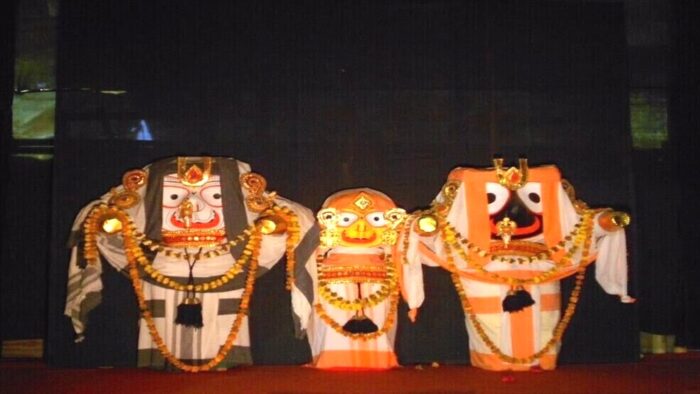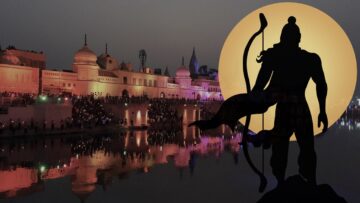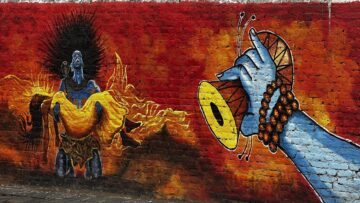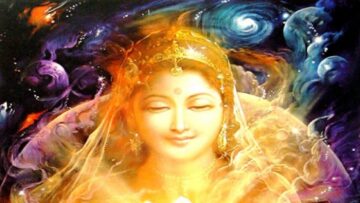Lord Jagannath is Purusha Amanava– A Divine human. He is immortal and imperishable and incessant. He is the abstract cosmic soul dwelling in the world of mortals where He reigns as the imperishable supreme soul of the Universe as Param Atma.
The Sanskruti and tradition of Shri Jagannath stands as a witness as well a symbol of hope, illuminating the wellbeing and unification of mankind. The anthropomorphic Divine, an avatar of Lord Vishnu, Lord Jagannath celebrates and mourns life just as all his devotees do.
The month of Margasira is preceded by the holy month of Kartika. As per the Hindu calendar, The Margashira month is the ninth month and generally coincides with the English month of November and covers December. The month draws its name from the Mrigasira Nakshatra.
In the middle of Margasira month , the Sun transits from Vrischika Rasi -Scorpio to Dhanu Rashi -Sagittarius. Dhanur Sankranti is observed when Sun enters Dhanur Rasi and also marks the beginning of Hemanta Ritu- the beginning of the winter season in the tropical topography.
Manabasa Gurubar
The month is also dedicated to the worship of Goddess Lakshmi. Every Thursday throughout the month of Margasira , Goddess Lakshmi is offered prayers, Lakshmi purana is read in every Odiya household and the new rice crop is placed before the Goddess as an offering in a Manno– A measuring cup.
This Lakshmi puja in the month of Margasira is popular as Mannobasa Gurubar. A special wall and floor art known as jhoti is done during this puja. The entrance floor and the walls of each house are decorated with hand drawn motifs.
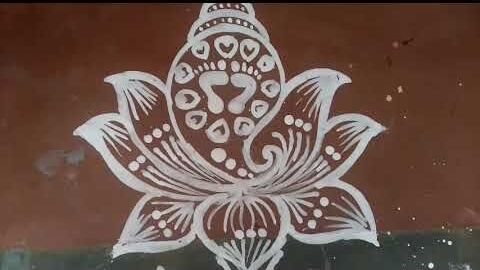
Manobasa Gurubar Jhuti
These beautiful drawings are done with watery rice paste. The white drawings, by and large, have feet signifying the feet of Goddess Lakshmi; the lotus as a seat of Maha Lakshmi; elephants as attendants at the service of Devi Lakshmi. All these motifs are supported by geometrical designs.
Prathamastami
The month of Margasira is called the Agrahayana masa. Agra meaning elder, the month also celebrates the firstborn child in the family. This special day for celebrating the eldest child falls on the Krushna Paksha, Astami tithi of Margasira. Popularly known as Prathamastami formed by two root words Prathama – meaning first and Ashtami- meaning Eighth day.
On this day in the Jagannath temple at Puri , a Baruna Puja is conducted for Shri Jagannath after the daily morning rituals .Thereafter new clothes and sweets that come as an offering from the Niali, Madhaba temple is presented to the Trinity.
Around fifty km from Puri, Niali Madhaba temple is considered as Shri Jagannath’s maternal uncle’s house and as per rituals the clothes presented to the Divine have to be provided by the maternal uncle’s house.
This ritual was discontinued for several years but has been reinitiated. The Deities wear silken khandua and patta sent from their uncle’s house.
The special food offering in the sakala dhupa – Breakfast on this day at the Jagannath temple is Enduri pitha. This special steamed rice dumpling, stuffed with coconut and molasses filling, wrapped in turmeric leaves is prepared particularly on Prathamastami, once in a year and offered to the Trio.
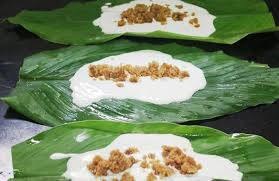
Prathamashtami Rice Dumpling
Across Orissa the first born child of the household is presented with new clothes. Prayers accompanied with special rituals are done for the firstborn of the family.
Deva Deepavali
After being recognized as the eldest of the family in the Prathamastami ritual; the responsibility prescribed to the eldest in the family is expected from Shri Jagannath and His siblings. For three consecutive days- beginning from Krushna Pakshya Chaturdashi, Amavasya the sraddha ritual is completed on Pratipada tithi.
As per myth, Shri Jagannath was present in various incarnations in the past Yugas. On these three prescribed days He offers Sraddh to His ancestors of each Yuga. On the first day of Krushna Pakshya Chaturdashi, He offers “pinda” to Aditi and Kashyap to whom He was born in the Satya Yuga in the Bamana Rupa.
On Amavasya He offers Pinda to Dasharatha and Kaushalaya to whom He was born as Shri Ram in the Treta Yuga.
On Pratipada -the third and final day he offers Sraddha to Devaki and Vasudev to whom He was born as Krishna in Mathura; Nanda and Yashoda who brought him up as their own child; and to King Indradyumna and his Queen Gundicha Devi who gave Shri Jagannath to this world.
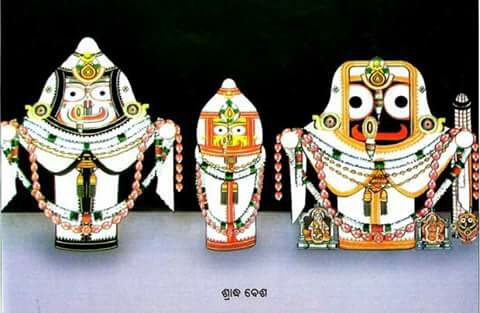
Sraddha Besha
On all the three days Shri Jagannath and His siblings adorn the Sraddha besha and perform rituals to satiate the departed souls – his parents and forefathers.
The Trinity is dressed in white silken robes and headgear. Sri Jagannath is draped in twenty-seven feet long cloth, Balavadra is draped a twenty-one feet long cloth and Subhadra in an eighteen feet long cloth. Their heads are covered with Sirikapada.
Ghodolagi Besha
As the chilly winters make way into Puri , the Gods feel frosty . To keep the Trinity masked from the wintery chill , the Gods wear the winter wear starting from Margasira Sukla Sasthi tithi -the sixth day of the bright fortnight in Margasira to Magha Sukla Panchami tithi the fifth day of the bright fortnight in Magha that is Basanta Panchami.
मार्गशीर्ष शीते पक्षे
षष्ठयां चैवः जनारदनम
बसतये प्राबुणाए देवा सर्वधिठः फलातफयै।
Magashir Shete Pakse
Shashtaang Chave Janardhanam
Basataye Prabunaaye Deva Sarvadith Phalatfaye
Meaning: During the winters of Margashir month, an audience of the Trinity , provides the best results.
– Jatra Bhagabata
This day is also known as Prabarana Sashthi or Odhana Sasthi. Deities wear starched cozy warm clothes made especially for the winter season.
मार्गशीर्ष शीते पक्षे
षष्ठयां प्राबुणोउत्स्यं ।
Māgaśīra śītē pakṣē
ṣaṣṭhayāṁ prābuṇō’utsyaṁ
– Skanda Punara
Meaning: In the winters of Margashira month , on the sixth day Prabarana is celebrated.
According to tradition, the colour of the costume is changed on each day of the week as per the ruling star and the unique colour that is prescribed. The Trio is changed into warm clothes every afternoon after the offering of ‘bhog’.
This Change of attire is also called the Ghodolagi Besha.
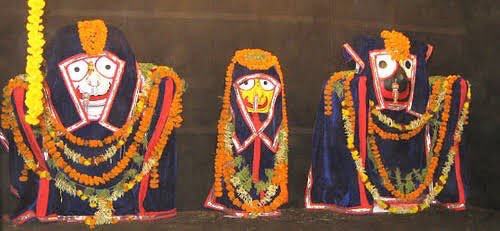
Ghodolagi Besha
The creator of human kind dwells as a part of humankind. He is Param Purusha –the supreme Divine human. In summers He enjoys boat rides in the Chandana Yatra. He undertakes a sojourn during the Ratha yatra to his birth citadel at the Shri Gundicha temple.
Like every human He remembers His ancestors and offers them an yearly Pind Daan– Libation. He continues with the ‘manaviya leelas’ –human like activities, living the life of a manava sustaining His Divine manifestation.
Let Jagannath Swami be the purpose of my vision.
Note: This year the Manobasa Gurubar at Jagannath temple Puri started on 3rd Dec, 2020. Prathamashtami was celebrated on 8th Dec, 2020. Deva Deepavali was on 13th, 14th and 15th Dec, 2020 and Odhana Sasthi was done on 20th Dec, 2020. All the rituals were/ are being conducted without the participation of devotees , due to the prevailing Covid-19 pandemic situation.
Featured Image Credits: medium
Disclaimer: The opinions expressed in this article belong to the author. Indic Today is neither responsible nor liable for the accuracy, completeness, suitability, or validity of any information in the article.

